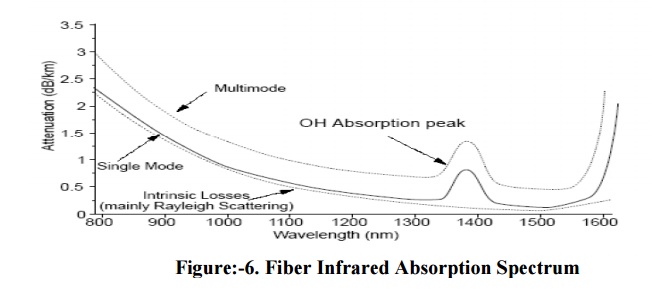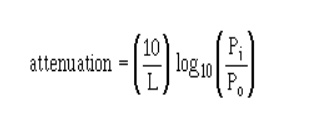Chapter: Fiber optics and Laser instruments : Optical Fiber and Their Properties
Fiber Mechanical and Transmission characteristics
Fiber characteristics
1. Mechanical characteristics
1. Strength
2. Static
fatigue
3. Dynamic
fatigue
1. Strength
The
cohesive bond strength of the constituent atoms of a glass fiber governs its
theoretical intrinsic strength. Maximum tensile strength of 14 GPa is observed
in short length glass fibers. This is closed to the 20 GPa tensile strength of
steel wire. The difference between glass and metal is that, under an applied
stress. The difference between glass and metal is that, under an applied stess,
glass will extend elastically up to its breaking strength whereas metal can be
stretched plastically well beyond their elastic range
Eg:
Copper wires can be elongated plastically
2. Static fatigue
It refers
to the slow growth of the existing flaws in the glass fiber under humid
conditions and tensile stress. This gradual flaw growth causes the fiber to fail
at a lower stress level than that which could be reached under a strength test.
The flaw shown propagates through the fiber because of chemical erosion of the
fiber material at the flaw tip. The primary cause of this erosion is the
presence of water in the environment which reduces the strength of SiO2
bbonds in glass. The speed of the growth reaction is increased when the fiber
is put under test. Fused silica offers the most resistance of glasses in water.
In general, coating are applied to the fiber immediately during the
manufacturing process which affords a good degree of protection against
environmental corriosion.
3. Dynamic fatigue:
When an
optical cable is being installed on a duct, it experiences repeated stress
owing to surging effects. The surging is caused by varying degrees of friction
between the optical cable and the duct or guiding tool on a curved route.
Varying stress also arises in aerial cables that are set into transverse
vibration by the wind. Theoritical and experimental investigation have shown
that the time to fail under these conditions is related to the maximum
allowable stress by the same life time parameter that are in the cases of
statics stress that increases at a constant rate.
2. Transmission characteristics
1. Attenuation

The lower
curve shows the characteristics of a single-mode fiber made from a glass
containing about 4% of germanium dioxide (GeO2) dopant in the core. The upper
curve is for modern graded index multimode fiber. Attenuation in multimode
fiber is higher than in singlemode because higher levels of dopant are used.
The peak at around 1400 nm is due to the effects of traces of water in the
glass.
Attenuation
in fiber optics, also known as transmission loss, is the reduction in intensity
of the light beam with respect to distance travelled through a transmission
medium. Attenuation coefficients in fiber optics usually use units of
dB/kmthrough the medium due to the relatively high quality of transparency of
modern optical transmission media. Attenuation in an optical fiber is caused by
absorption, scattering, and bending losses.
Attenuationis
the loss of optical power as light travels along the fiber. Signal attenuation
is defined as the ratio of optical input power (Pi) to the optical output power
(Po).
Optical
input power is the power injected into the fiber from an optical source.
Optical output power is the power received at the fiber end or optical
detector.

Each
mechanism of loss is influenced by fiber-material properties and fiber
structure. However, loss is also present at fiber connections i.e. connector,
splice, and coupler losses.
2.Absorption losses
Absorption in optical fibers is explained by three factors: Imperfections in the atomic structure of the fiber material The intrinsic or basic fiber-material properties
The extrinsic (presence of impurities) fiber-material properties
Imperfections
in the atomic structure induce absorption by the presence of missing molecules
or oxygen defects. Absorption is also induced by the diffusion of hydrogen
molecules into the glass fiber.
Intrinsic Absorption.-
Intrinsic absorption is caused by basic fiber material properties. If an optical fiber were absolutely pure,
with no imperfections or impurities, then all absorption would be intrinsic.
Intrinsic absorption sets the minimal level of absorption
Extrinsic Absorption.-
Extrinsic absorption is caused by impurities introduced into the fiber material. Trace metal impurities, such
as iron, nickel, and chromium, OH ions are introduced into the fiber during
fabrication. Extrinsic absorption is caused by the electronic transition of
these metal ions from one energy level to another
Related Topics